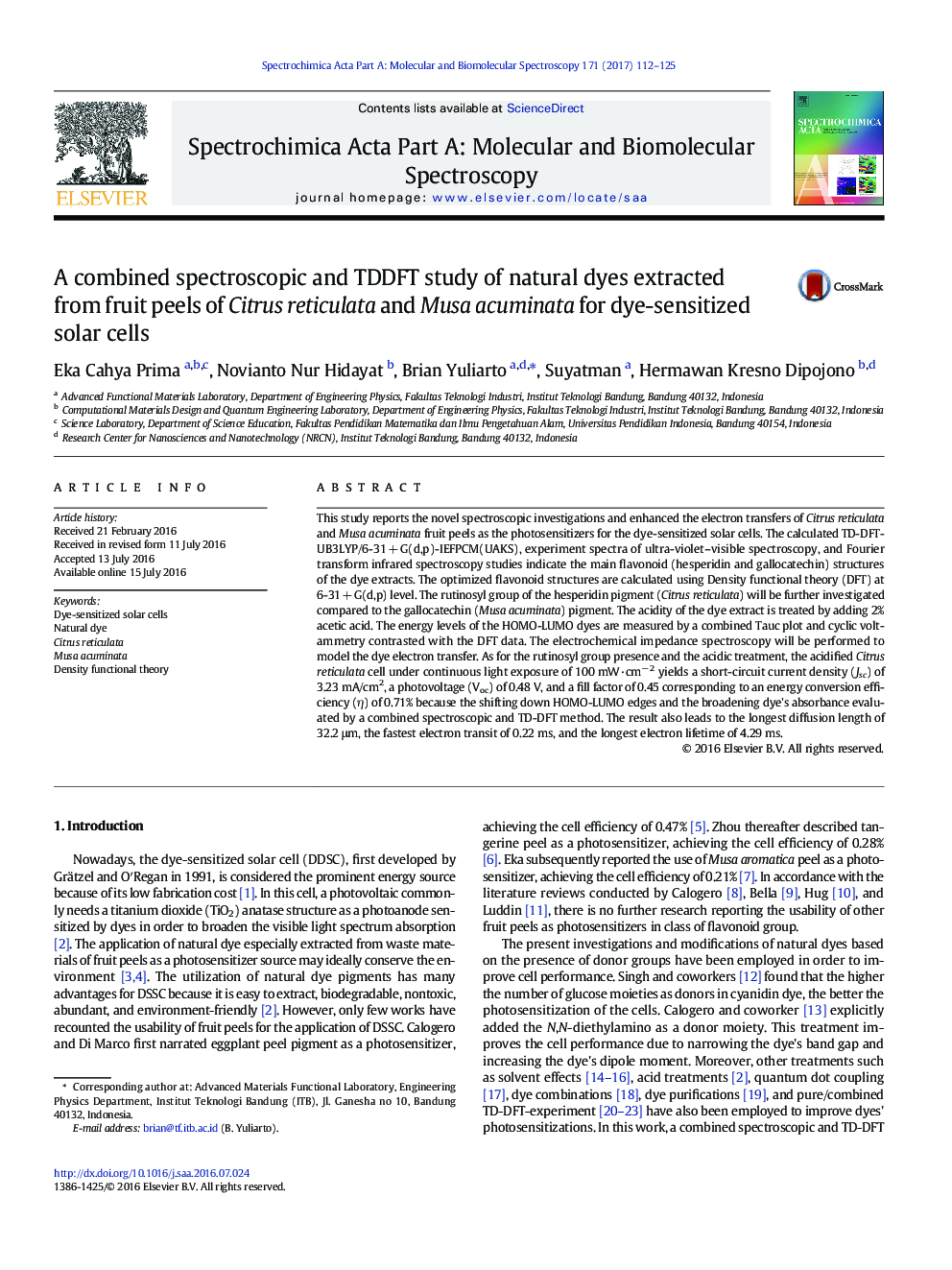| Article ID | Journal | Published Year | Pages | File Type |
|---|---|---|---|---|
| 1229980 | Spectrochimica Acta Part A: Molecular and Biomolecular Spectroscopy | 2017 | 14 Pages |
•Extracts of Citrus reticulata and Musa acuminata fruit peels were used as sensitizers.•Spectroscopic properties of the dyes in neutral and acid conditions were studied compared to the DFT calculations.•In the presence of rutinosyl moiety, Citrus reticulata cell performance was increased to 0.71%.•HOMO-LUMO energies, electron transfers, and molecular orbitals were performed.
This study reports the novel spectroscopic investigations and enhanced the electron transfers of Citrus reticulata and Musa acuminata fruit peels as the photosensitizers for the dye-sensitized solar cells. The calculated TD-DFT-UB3LYP/6-31 + G(d,p)-IEFPCM(UAKS), experiment spectra of ultra-violet–visible spectroscopy, and Fourier transform infrared spectroscopy studies indicate the main flavonoid (hesperidin and gallocatechin) structures of the dye extracts. The optimized flavonoid structures are calculated using Density functional theory (DFT) at 6-31 + G(d,p) level. The rutinosyl group of the hesperidin pigment (Citrus reticulata) will be further investigated compared to the gallocatechin (Musa acuminata) pigment. The acidity of the dye extract is treated by adding 2% acetic acid. The energy levels of the HOMO-LUMO dyes are measured by a combined Tauc plot and cyclic voltammetry contrasted with the DFT data. The electrochemical impedance spectroscopy will be performed to model the dye electron transfer. As for the rutinosyl group presence and the acidic treatment, the acidified Citrus reticulata cell under continuous light exposure of 100 mW·cm− 2 yields a short-circuit current density (Jsc) of 3.23 mA/cm2, a photovoltage (Voc) of 0.48 V, and a fill factor of 0.45 corresponding to an energy conversion efficiency (η) of 0.71% because the shifting down HOMO-LUMO edges and the broadening dye's absorbance evaluated by a combined spectroscopic and TD-DFT method. The result also leads to the longest diffusion length of 32.2 μm, the fastest electron transit of 0.22 ms, and the longest electron lifetime of 4.29 ms.
Graphical abstractFigure optionsDownload full-size imageDownload as PowerPoint slide
